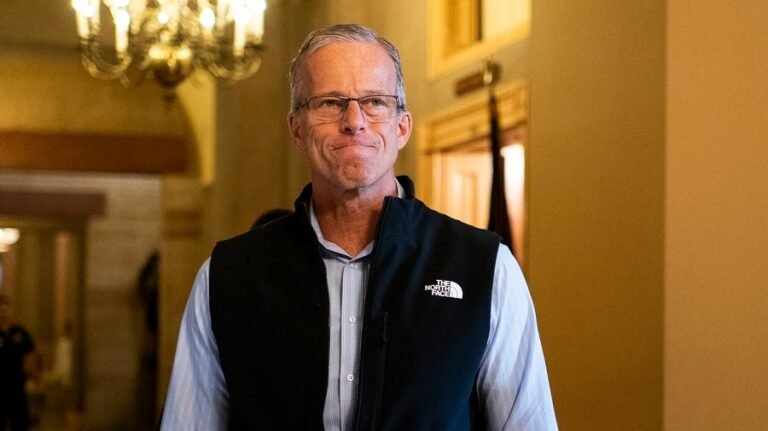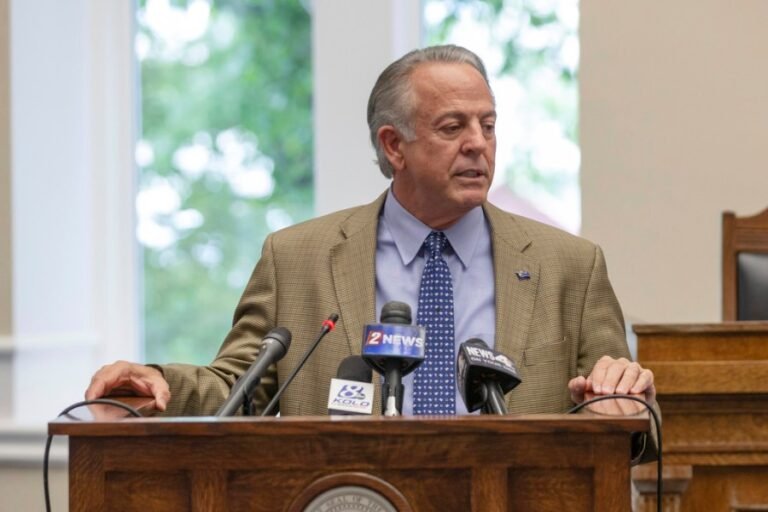
Over the last few months, a number of well-known companies have announced layoffs of tens of thousands of workers. UPS said it is getting rid of 48,000 employees. Amazon is shedding 30,000. Intel is firing 24,000. IBM, Target, Nestle, Accenture and Ford are terminating many thousands more. The list goes on.
And the culprit? According to many media reports, it’s artificial intelligence.
The “AI Destruction of Millions of Jobs Begins,” says Yahoo Finance. “Tens of Thousands of White-Collar Jobs Are Disappearing as AI Starts to Bite,” reports The Wall Street Journal. “A.I. Might Take Your Job,” warns The New York Times. “The Nation’s Largest Employers Are Putting Their Workers On Notice,” says The Washington Post.
Automation will kill jobs! Robots are destroying the world! The end is nigh!
These stories get clicks. But the truth is, AI isn’t the reason behind most of these job cutbacks. In fact, AI — at least so far — has not been working as well as hoped.
A recent survey published by KPMG of more than 48,000 business people around the world found that only 46 percent trusted their AI systems. A similar poll of developers — and these are the people who would know — revealed that only one-third trusted the output of their AI-driven development tools, a number that has been declining from the technology’s earlier years. “Almost right” is a phrase often heard.
Many news outlets have recently reported on the “workslop” generated by AI chatbots. This includes blurry logos, nonsensical texts, generic or unpolished writing and poor coding that has forced companies to hire more freelancers to correct the end product that AI got wrong, with many finding it much easier for a human worker to just do the job themselves.
“In April 2024, it seemed like agentic AI was going to be the next big thing,” writes Steven Newman, an AI expert. “The ensuing 16 months have brought enormous progress on many fronts, but very little progress on real-world agency.”
According to a recent New York Times report, a whopping 80 percent of big companies who invested in AI projects this year said they saw “no significant bottom-line impact” with as many as 42 percent abandoning their efforts. At the same time, an MIT study found that 95 percent of AI pilot programs “failed to deliver a measurable profit-and-loss impact” and only about 5 percent of these pilots are achieving rapid revenue acceleration.
“The 95 percent failure rate for enterprise AI solutions represents the clearest manifestation of the GenAI Divide,” writes Zvi Mowshowitz, a former hedge fund manager and long-time AI commentator. “Organizations stuck on the wrong side continue investing in static tools that can’t adapt to their workflows, while those crossing the divide focus on learning-capable systems.”
There are lots of surveys saying how many small businesses are adopting AI. But according to one of my clients, the HR firm Paychex, AI is not replacing workers; hiring has remained steady over the past year. And I think I know why — I couldn’t even create a simple image using any one of three popular AI chatbots. I need more employees to fix these problems!
This is not to say that AI isn’t having an impact. Bots are now doing the lion’s share of coding at big tech firms, which is why they’re shedding developers. Other AI systems are automating customer service and helping workers be more productive by creating policies, writing emails and analyzing spreadsheets.
As the technology emerges from its 1.0 phase, when there’s a reliable infrastructure and the inevitable bubble bursts that cleans out the bad ideas and the companies that never deserved to get their funding in the first place, what’s left will be the applications and agents and hardware — drones, robots, sensors — that will truly use AI to do work in place of humans. But I don’t know anyone who is replacing their employees with AI any time soon.
Which brings me back to jobs. If it’s not AI, then what’s really behind all of these layoffs? That’s simple: good old-fashioned corporate mismanagement. Just ask Andy Jassey.
“The announcement (about layoffs) that we made a few days ago was not really financially driven and it’s not even really AI driven, not right now,” said Jassey, Amazon’s CEO. “You end up with a lot more people than what you had before, and you end up with a lot more layers. Sometimes without realizing it, you can weaken the ownership of the people that you have who are doing the actual work and who own most of the two-way door decisions.”
Or listen to Target’s Michael Fiddelke.
“The complexity we’ve created over time has been holding us back,” said Target’s current COO and soon to be CEO. “Too many layers and overlapping work have slowed decisions, making it harder to bring ideas to life.”
What Jassey and Fiddelke are actually saying: We screwed up. We over-hired. We changed our minds. We hired the wrong people. Our forecasts were wrong. We didn’t anticipate a slowing economy, higher costs, rising tariffs, supply chain disruptions, consumer behavior, interest rate hikes and any number of other factors that caused these wrong decisions.
When companies make mistakes and hire too many people, or the wrong people, they wait for the right time to cut the fat. This usually occurs when there’s a financial downturn or a recession because that’s easy to blame. In this case, it’s the AI bubble. It’s a much easier story to tell your shareholders and the public that management’s actions are the result of smart technology investments instead of dumb, strategic mistakes. And the news outlets back up their claims for clicks.
So the enticing, terrifying story of AI taking away jobs isn’t really accurate, for the most part. The real reason for these layoffs is the same boring reason as before: fixing poor decisions.
Gene Marks is founder of The Marks Group, a small-business consulting firm.


